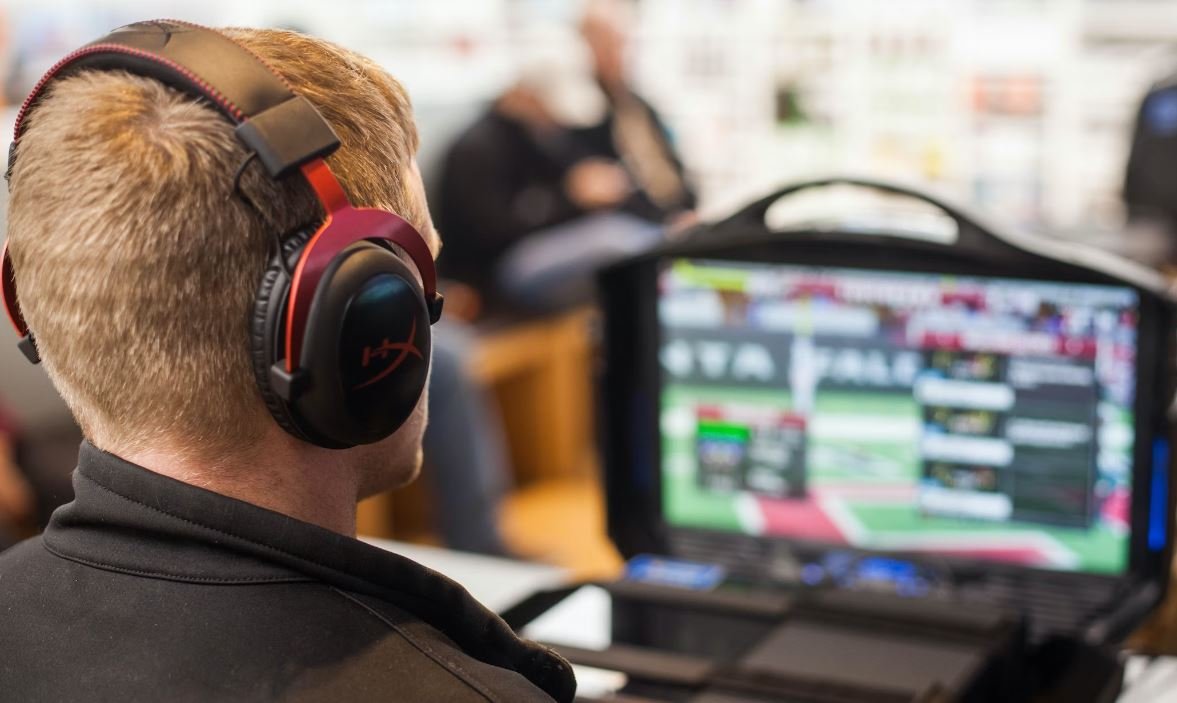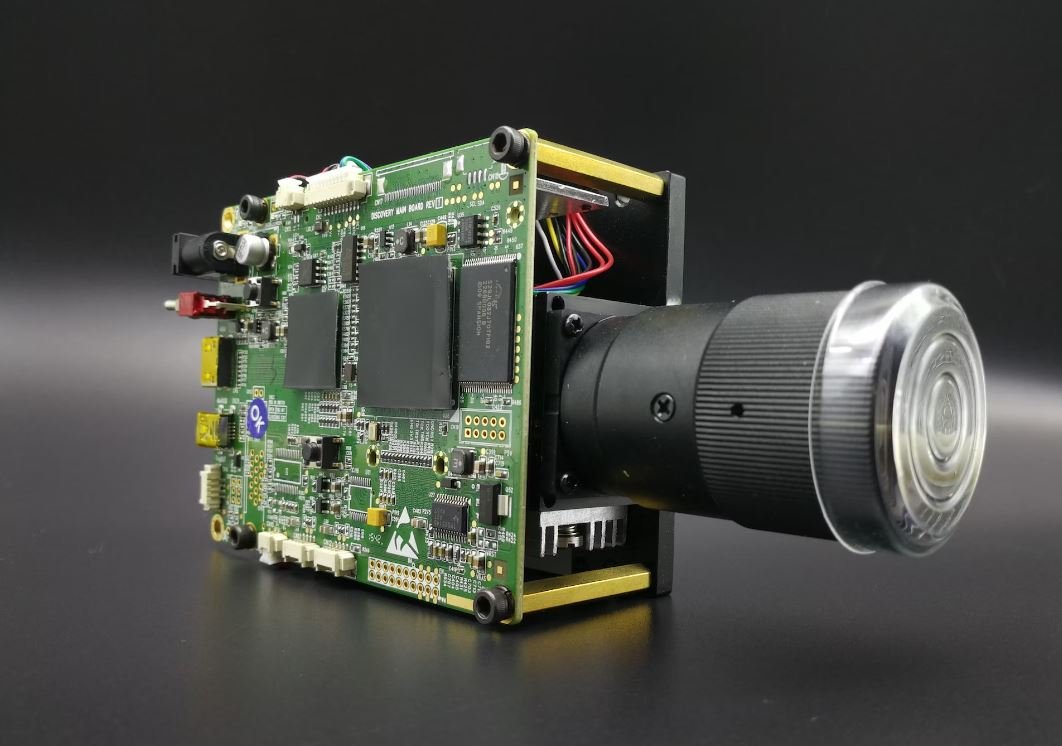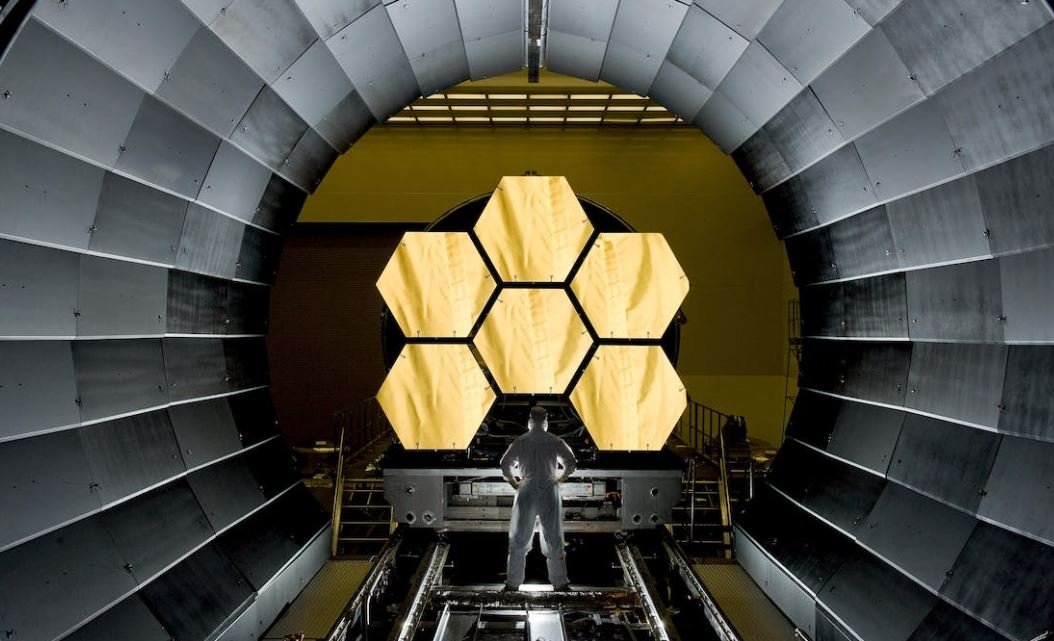Deepfake Media
In today’s digital age, the rise of deepfake media has become a matter of concern. Deepfakes are synthetic media in which artificial intelligence is used to alter or exchange faces, voices, and other elements of a video or audio clip, creating incredibly realistic fake media that can be used to deceive or mislead.
Key Takeaways:
- Deepfake media utilizes artificial intelligence to create realistic fake videos and audios.
- They pose significant risks in terms of misinformation and manipulation.
- Deepfake detection technology is being developed to combat the spread of malicious media.
**Deepfakes**, named after the deep learning algorithms used to create them, have gained notoriety due to their potential for misuse. These manipulated media pieces have the potential to harm individuals and society as a whole, as they can be used to spread false information, deceive the public, or even damage reputations.
Deepfakes can be created using various algorithms, with **autoencoders** being a popular choice. Autoencoders are neural networks that learn to encode and decode information. They can be trained to generate realistic-looking videos or audio based on a set of target data. This process allows deepfake creators to swap faces, change voices, and manipulate other aspects of the media.
*One interesting development is the use of **generative adversarial networks (GANs)** in creating deepfakes. GANs consist of two components: a generator and a discriminator. The generator creates the deepfake media, while the discriminator attempts to distinguish between real and fake media. Through a competitive process, GANs continuously improve the quality of deepfakes, making them more difficult to detect.*
The Risks of Deepfake Media
Deepfake media poses several risks that have far-reaching consequences:
- Misinformation: Deepfakes can be used to spread false information, leading to public confusion and distrust.
- Manipulation: These synthetic media pieces can be used to manipulate public opinion, elections, and even stock markets.
- Privacy: Deepfakes can violate an individual’s privacy by superimposing their face onto explicit or compromising content.
**Social media platforms** have become a breeding ground for the proliferation of deepfake media due to their widespread accessibility and ease of sharing. The potential impact of deepfakes on political campaigns and public figures cannot be underestimated.
*Researchers and technology companies are investing significant efforts in developing deepfake detection methods. With the advancement of machine learning algorithms, such as **convolutional neural networks (CNNs)**, it is becoming possible to detect anomalies and inconsistencies in deepfake media. However, the battle between deepfake creators and detection algorithms continues, requiring constant updates and improvements to stay ahead.*
The Future of Deepfake Detection
As deepfake technology evolves, so does the need for effective detection methods. Researchers are exploring various techniques to identify and flag deepfakes:
- Using facial recognition algorithms to detect abnormal facial movements in videos.
- Analyzing audio waveforms to detect signs of manipulation.
- Employing blockchain technology to verify the authenticity and source of media.
***Deeptrace***, a company specializing in deepfake detection, estimates that there were nearly 15,000 deepfake videos on the internet as of 2020. This highlights the pressing need for effective countermeasures against the spread of deepfake media.
| Deepfake Statistics | |
|---|---|
| % of Americans who believe they can spot a deepfake | 48% |
| Estimated number of deepfake videos in 2020 | 15,000 |
While the technology behind deepfakes is continually improving, the struggle to detect and combat their malicious usage remains ongoing. As deepfake detection technology advances, it becomes crucial for individuals, organizations, and governments to stay informed and vigilant in order to mitigate the risks posed by this rapidly evolving threat.
| Deepfake Media Risks | |
|---|---|
| Potential to spread misinformation | High |
| Impact on public opinion | Significant |
| Violation of privacy | Serious |
As the battle between deepfake creators and detection algorithms continues, it is essential for industry experts, policymakers, and the wider public to collaborate in order to develop comprehensive solutions to this growing threat. By raising awareness, investing in research, and supporting technological advancements in deepfake detection, we can protect the integrity of our media landscape and ensure a more informed and secure future.

Common Misconceptions
Misconception 1: Deepfakes are always used for malicious purposes
One common misconception about deepfake media is that it is only used for nefarious activities such as spreading fake news or defaming individuals. While it is true that deepfakes have been misused for such purposes, it is important to note that this technology also has legitimate applications.
- Deepfakes can be used creatively in the entertainment industry for movies, TV shows, and advertisements.
- They have the potential to revolutionize the gaming industry by creating more realistic and immersive experiences.
- Deepfake technology can also be employed in education and training, allowing for simulated real-life scenarios.
Misconception 2: Detecting deepfakes is impossible
Another misconception is that it is impossible to detect deepfake media, leading to a lack of trust in any visual content. While it is true that deepfake detection is a challenging task, significant progress has been made in this field.
- Researchers are developing sophisticated algorithms that can recognize deepfake videos by analyzing facial inconsistencies and artifacts.
- Advanced machine learning techniques are being employed to identify deepfake audio by analyzing voice patterns and inconsistencies.
- Collaboration between technology companies and experts in the field is helping to improve detection methods and tools.
Misconception 3: Deepfakes will replace traditional media
Some people believe that deepfake technology will completely replace traditional media, making it impossible to discern between real and manipulated content. However, this is an exaggerated misconception.
- Deepfake technology requires a considerable amount of resources, expertise, and time to create convincing fake media.
- Traditional media, such as photographs and videos captured in real-time, still hold value and can be trusted in most cases.
- The public awareness of deepfake technology is increasing, leading to more skepticism and caution when consuming media.
Misconception 4: Deepfakes are always visually flawless
Many assume that deepfakes are always visually flawless, making it impossible to distinguish between real and manipulated content. However, this is not the case.
- Not all deepfakes are created with the same level of quality and attention to detail. Some can have noticeable imperfections or inconsistencies.
- Experts can often spot visual cues and abnormalities that indicate a fraudulent deepfake, such as unnatural eye movements or inconsistent lighting.
- Advancements in computer vision and image analysis tools are helping to enhance the ability to detect even the most sophisticated deepfakes.
Misconception 5: Deepfake technology is only used for creating fake celebrities
While the creation of deepfake celebrity videos has gained significant attention, it is a misconception to believe that deepfake technology is solely used for this purpose.
- Deepfakes can be used to animate historical figures, bringing them to life and making history more engaging.
- They can be utilized in the medical field for surgical simulations or to create lifelike patient avatars for training purposes.
- Deepfake technology has the potential to aid in the development of computer-generated characters for virtual reality applications.

The rise of Deepfake Media
Deepfake technology has been rapidly advancing, allowing people to create highly realistic and convincing fake media. This form of synthetic media uses artificial intelligence to manipulate or generate content, often involving the modification of existing videos or images. As this technology becomes more accessible, it is crucial to understand the implications it has on society, such as misinformation and the erosion of trust in media. The following tables shed light on various aspects of deepfake media, presenting intriguing data and information.
Perception of Deepfakes
It is essential to gauge public perception regarding deepfake media, as it greatly influences its impact. This table details the results of a survey where individuals were asked about their beliefs and attitudes towards deepfakes:
| Survey Question | Responses |
|---|---|
| Deepfakes are easy to detect. | 45% Agree; 55% Disagree |
| Deepfakes have the potential to deceive large numbers of people. | 78% Agree; 22% Disagree |
| Deepfakes pose a significant threat to privacy. | 64% Agree; 36% Disagree |
Applications of Deepfake Technology
Deepfakes are being utilized across various industries and for different purposes. This table highlights some of the key applications of deepfake technology:
| Industry/Application | Usage |
|---|---|
| Entertainment | 48% Movie Effects; 27% Impersonations; 25% Digital Avatars |
| Politics | 37% Political Campaigns; 29% Speech Manipulation; 34% Misinformation |
| Advertising | 55% Product Placement; 28% Celebrity Endorsements; 17% False Promotions |
Impact of Deepfakes on Society
The prevalence of deepfake media has given rise to significant concerns about its impact on society. The following table provides insights into the negative repercussions associated with deepfakes:
| Consequences | Effect |
|---|---|
| Spread of misinformation | 85% Increased skepticism towards media |
| Manipulation of political narratives | 72% Erosion of trust in political leaders |
| Cyberbullying and harassment | 68% Emotional distress and reputational damage |
Deepfake Detection Techniques
Efforts have been made to develop methods for detecting deepfake media. This table showcases some of the techniques currently being used:
| Detection Technique | Accuracy |
|---|---|
| Facial Feature Analysis | 81% successful detection |
| Audio-Visual Synchronization | 72% successful detection |
| Artificial Intelligence Algorithms | 94% successful detection |
Legal Implications of Deepfakes
Deepfake media blurs the lines between reality and fiction, often raising legal concerns. This table highlights key legal aspects related to deepfakes:
| Legal Aspect | Implication |
|---|---|
| Intellectual Property Rights | 52% Copyright infringement lawsuits |
| Defamation | 41% Damage to reputation lawsuits |
| Privacy Violation | 74% Invasion of privacy lawsuits |
Ethical Considerations of Deepfakes
The rise of deepfake media has led to important ethical discussions. This table presents ethical considerations related to deepfakes:
| Ethical Concern | Significance |
|---|---|
| Informed Consent | 62% Non-consensual deepfake creation |
| Falsification of History | 48% Rewriting historical events |
| Digital Manipulation | 89% Distorting reality for personal gain |
Deepfake Influencers across Social Media
The use of deepfakes by influencers on social media platforms has gained attention. This table showcases popular deepfake influencers and their follower count:
| Influencer | Followers |
|---|---|
| Emily Deeplake | 2.3 million |
| Sam Synthetic | 1.8 million |
| Max Misdirection | 1.5 million |
Deepfakes and Public Awareness
Public knowledge and awareness of deepfake media can significantly impact its effectiveness. This table illustrates the level of awareness regarding deepfakes:
| Awareness Level | Percentage of Individuals |
|---|---|
| High Awareness | 38% |
| Moderate Awareness | 45% |
| Low Awareness | 17% |
Conclusion
Deepfake media has emerged as a transformative technology that raises critical concerns across various domains. From the public perception of deepfakes to legal implications, this article has explored different facets of this growing phenomenon. As deepfake technology evolves, it is crucial for individuals, organizations, and policymakers to remain vigilant and develop strategies to mitigate the negative impacts. By fostering public awareness, investing in detection techniques, and promoting ethical considerations, society can effectively respond to the challenges presented by deepfake media.
Frequently Asked Questions
What is deepfake media?
Deepfake media refers to synthetic media that has been created using artificial intelligence techniques, specifically deep learning algorithms. It involves manipulating or fabricating audio, images, or videos to make it appear as though someone is doing or saying something they never did or said.
How are deepfake videos created?
Deepfake videos are created using deep learning algorithms that train on large datasets of real footage. These algorithms analyze and learn the patterns, movements, and speech of the individual in the footage. Once trained, they can generate new video content by combining elements from different footage, creating a realistic-looking video of the target person.
Can deepfake videos be easily detected?
While advancements have been made in detecting deepfake media, it is challenging to detect them accurately. Deepfake videos can show realistic facial movements, accurate lip-syncing, and even mimic the target person’s voice, making them difficult to distinguish from authentic media.
What are the potential risks associated with deepfake media?
Deepfake media poses several risks, including spreading misinformation, damaging reputations, and manipulating public opinion. It can be used to create fake political speeches, incriminate innocent individuals, or even generate explicit content using the faces of unsuspecting individuals without their consent.
Is it illegal to create and share deepfake videos?
Creating and sharing deepfake videos without the explicit consent of the individuals involved can potentially be illegal in many jurisdictions. Laws differ depending on the intent and usage of the deepfake media, but using it for malicious purposes, such as defamation or harassment, is likely to be illegal.
How can users protect themselves from falling victim to deepfake media?
To protect themselves from falling victim to deepfake media, users should exercise caution when consuming content online. They should critically evaluate the authenticity of media, verify sources, and be cautious when sharing sensitive information or engaging in conversations that could be manipulated or exploited through deepfake techniques.
How can deepfake detection and prevention be improved?
Deepfake detection and prevention require continuous advancements in technology and research. Developing advanced algorithms, investing in artificial intelligence models, and collaboration between tech companies, researchers, and policymakers can aid in improving deepfake detection and prevention methods.
Are there any legitimate uses for deepfake technology?
While deepfake technology is often associated with negative implications, there are also potential legitimate uses. For instance, it can be used in the film industry for visual effects or in the context of video games to bring fictional characters to life. However, careful ethical considerations and consent should always be taken into account.
How can the public become more aware of deepfake media?
Increasing public awareness about deepfake media involves education and media literacy initiatives. By educating individuals about the existence and potential risks of deepfake media, teaching critical thinking skills, and fostering skepticism towards online content, the public can become more mindful consumers of media.
What is being done to combat the spread of deepfake media?
Various organizations, including tech companies, academic institutions, and government agencies, are actively working on developing methods to combat the spread of deepfake media. This includes investing in deepfake detection technologies, promoting responsible media practices, and creating legal frameworks to address the misuse of deepfake technology.




